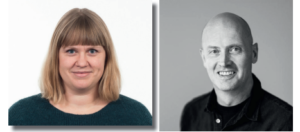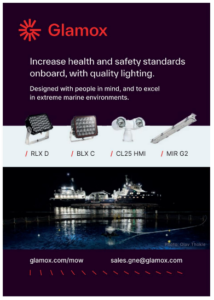Safety first

A report from Norway finds the aquaculture sector is still reporting a high level of industrial injuries. Vince McDonagh reports
A growing number of Norwegian aquaculture staff are worried that their work is damaging their health.
It is not so much a fear of being killed or serious injury – although that danger exists – but more to do with the impact of strain injuries resulting from heavy lifting and repetitive tasks.
These worries have been highlighted in a comprehensive Health and Safety Executive (HSE) survey of almost 1,300 staff.
The Norwegian HSE believes the workers have reason to be concerned, pointing out that the risk of injury is statistically high among the 7,000 people who work on the fish farming frontline.
Some 62% of those surveyed said they were worried that the working environment around farms could affect their health, with around half citing accidents as the chief cause.
The majority consider strain injuries to be the biggest hazard. It is already known that the main risk factors are from monotonous heavy lifting, especially when the upper body is bent or twisted.
Senior SINTEF researcher Trine Thorvaldsen, who led the survey, says that technology in the industry is developing at a rapid pace so it is important to keep a close eye on safety issues.
She adds: “The everyday life of the employees is changing with new vessels, new cage constructions and in the not-too-distant future, facilities far out to sea.”
The employees’ working environment is rarely the driver for changes and innovations, despite the fact that technology can be a key to reducing risk, Thorvaldsen points out.
The safety researcher finds that both employees in the industry and representatives of the trade unions are advocating that such investigations must be carried out more regularly.
“Preventing work-related absence and dropouts in the industry is in everyone’s interest. We believe that updated reports are valuable for the continuous HSE work carried out by farming companies, shipping companies, suppliers and authorities,” she says.
Through the survey, researchers can map what has happened since the previous survey in 2016. It has also been a goal to gain insight into the interaction between independent shipping companies and farming companies, she explains.
Many of the participants in the survey are employed in companies that are external service providers to the fish farming companies.
The survey reveals that a full 66% of these believe that insufficient cooperation with the actual companies is a threat to safety.
An equally large proportion believe that the farming companies’ demands for efficiency mean that they sometimes have to break safety procedures.

Trine Thorvaldsen (left); Trond Kongsvik
Trond Kongsvik, professor at the Department of Industrial Economics and Technology Management at the Norwegian University of Science and Technology, who also worked on the HSE survey, says: “These are recognisable themes from industries such as construction and the petroleum industry.
“There we know that so-called subcontractors often work under different framework conditions and are more prone to accidents than the employees in the core business.”
For all the respondents taken together, the HSE says it is worth noting that half have been away from work due to illness or injury in the past year, with 17% answering that the illness or injury that kept them away was work-related. Some, in fact, were absent for six weeks or more.
The report is part of a larger project, which also deals with the analysis of accident statistics, which shows that the occupational injury and death rate in the aquaculture industry is high compared to other industries.
The Norwegian Occupational Safety and Health Administration has registered more than 34 personal accidents a year in the period between 2011 and 2022.
Falling, bumping, being hit by an object and being pinched or trapped are the most frequent accident incidents.
Yet despite the dangers and concerns over safety, a large majority of those surveyed said they were largely happy at work.
The report says: “This can perhaps be explained by the fact that it is the working conditions in everyday life that determine whether people thrive on a general basis – and we see that a great many do.
“They point to good colleagues and an interest in aquaculture as the most important reasons for their wellbeing.
“But then there can be challenges linked to the major operations, such as de-lousing. Then work pressure and risky situations often arise, and this in turn affects the answers about whether production goes beyond safety.”
Thorvaldsen says: “The answers in the survey also show that safety is closely linked to framework conditions, organisation and management.”
For example, 29% believe that attention to production comes before safety and 30% find it “unpleasant” to point out breaches of safety rules.
Some 22% claim that they are occasionally pressured to work in a way that threatens safety and 16% experience peer pressure that goes beyond safety assessments.
“These results highlight areas that the players in the industry should pay particular attention to. Some may be familiar with some of the findings presented in this report and less so with other findings. We therefore encourage everyone to use the report actively in their internal HSE work to assess their own working environment,” says Thorvaldsen.
Scottish Aquaculture Industry Forum
In the UK, regulation of health and safety in aquaculture involves either the Health and Safety Executive (HSE) or the Maritime and Coastguard Agency (MCA). Both regulators say they are concerned about the number of deaths and injuries. HSE continues to investigate fatalities in the industry, as does the Marine Accident Investigation Branch.
Regulatory responsibility for activities at fish cages and associated moored structures as well as cages on land falls to HSE, while the MCA deals with activities on board vessels at sea, which come under maritime law.
Both organisations sometimes need to work together and the Scottish Aquaculture Industry Forum (SAIF) was set up to support close working relations between the enforcement bodies and with the industry itself. As well as HSE and MCA, SAIF membership includes the Northern Lighthouse Board, Crown Estate, Royal National Lifeboat Institution, Scottish Sea Farms and Bakkafrost Scotland.
One of the main functions of the SAIF is to promote good practice to achieve compliance with health and safety requirements by the industry, whether they operate at sea or from at fixed structures.


